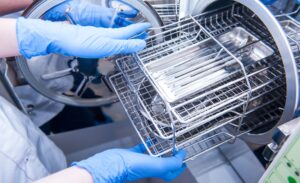STERILIZATION & VALIDATION
Menu
Ethylene Oxide (EtO) Sterilization Standards Expertise
One of the most popular methods of sterilization of medical devices is through exposure to Ethylene Oxide gas (EtO/EO).
The process of developing and constructing a packaging system for terminally sterilized medical devices is a convoluted and pressing endeavor. The definitive nature of the medical device, the intended sterilization methods, the intended use, expiration date, transport, and storage all influence the packaging system design and choice of materials. The combination of the medical device and the packaging system should perform efficiently, safely, and adequately in the end-user’s hands.
Due to its reactive nature the actual EtO process must occur within enclosed chambers to prevent leaks and exposure to the ethylene oxide gas. Also EtO Sterilization is a lengthier process than other methods such as Gamma as it involves three stages:
EtO Sterilization
One of the most popular methods of sterilization of medical devices is through exposure to Ethylene Oxide gas (EtO/EO). The gas is an alkaline agent that infiltrates packaged medical devices to kill microorganisms and thus achieve sterilization. EtO is toxic and flammable/explosive at low temperatures (flash point of -20°C) and so is used on products that could get damaged or cannot withstand high temperature processes. Typically the process is applied on:- Plastic products/packaging that get discolored with irradiation
- Devices that incorporate electronic components
- Materials that get damaged at higher temperatures
- Custom kits
- Materials that are not compatible with other methods such as Gamma and Steam sterilization
Due to its reactive nature the actual EtO process must occur within enclosed chambers to prevent leaks and exposure to the ethylene oxide gas. Also EtO Sterilization is a lengthier process than other methods such as Gamma as it involves three stages:
- Preconditioning and/or Conditioning of device through temperature & humidity variations
- Gas Dwell Phase/Sterilizing Cycle where the device is exposed to the EtO gas
- Aeration of exposed device for removal of gas from the products
Tests
Tests conducted on EtO sterilized Medical Device are inclusive of but not limited to:- Bioburden test
- Product Sterility Testing
- Ethylene Oxide Testing (to check concentration of EtO on device)
- Biological Indicator Testing
Lets get started!
Experience quick and efficient small-batch EtO sterilization at an LSO facility near you. Strat streamlining your sterilization needs with us today.




